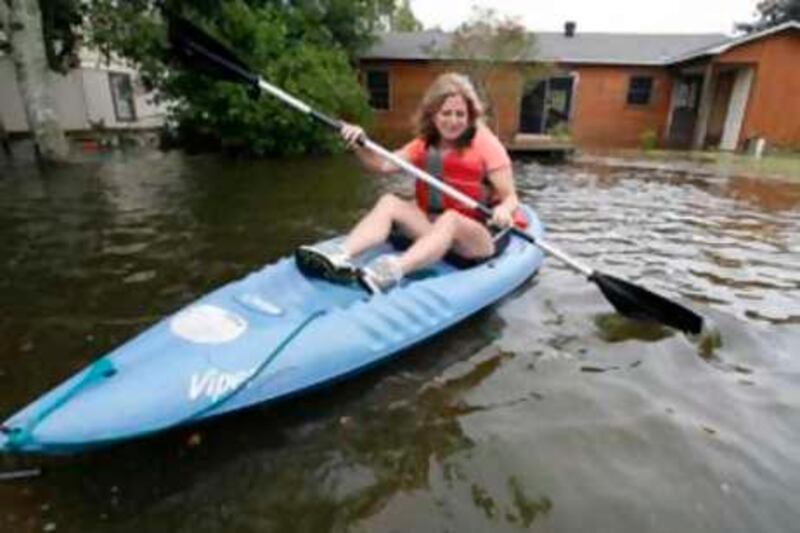NEW ORLEANS // A weaker-than-expected Hurricane Gustav swirled into southern Louisiana today, delivering only a glancing blow to New Orleans that did little more than send water sloshing harmlessly over its rebuilt floodwalls. It was the first test of New Orleans' new and improved levees, which are still being rebuilt three years after Hurricane Katrina. And it was a powerful demonstration of how federal, state and local officials learnt some of the painful lessons of the catastrophic 2005 storm that killed 1,600 people.
The storm that crashed ashore as a Category 2 hurricane with 177kph winds had, by late yesterday, been downgraded to a tropical storm with maximum sustained winds of 96kph. There was growing optimism that New Orleans would soon reopen for business. Mayor Ray Nagin cautioned that Tuesday would be too early for residents to return to a city largely in the dark, but their homecoming was "only days away, not weeks".
"I was hoping that this would happen, that we would be able to stand before America, before everyone, and say that we had some success with the levee system. I feel really good about it," Mr Nagin said. A mandatory evacuation order and curfew remained in effect, and nearly 80,000 remained without power after the storm damaged transmission lines that snapped like rubber bands in the wind and knocked 35 substations out of service.
The city's sewer system is damaged, and hospitals were working with skeleton crews on backup power. Drinking water continued to flow in the city and the pumps that keep it dry never shut down, two critical service failings that contributed to Katrina's toll. Crews will comb the city Tuesday to fully review the damage, Mr Nagin said, with the goal of having residents return later in the week. Buses are in place and ready to bring people back, he said.
"I would not do a thing differently," Mr Nagin said. "I'd probably call Gustav, instead of the mother of all storms, maybe the mother-in-law or the ugly sister of all storms." The sense of relief did not mean the state came through the storm unscathed. A levee in the southeastern part of Louisiana was in danger of collapse, and officials scrambled to fortify it. Roofs were torn from homes, trees toppled and roads flooded. A ferry sunk. More than 1 million homes were without power. And the extent of any damage to the oil and gas industry was unclear.
But the biggest fear - that the levees surrounding the saucer-shaped city of New Orleans would break - had not been realised. * AP






